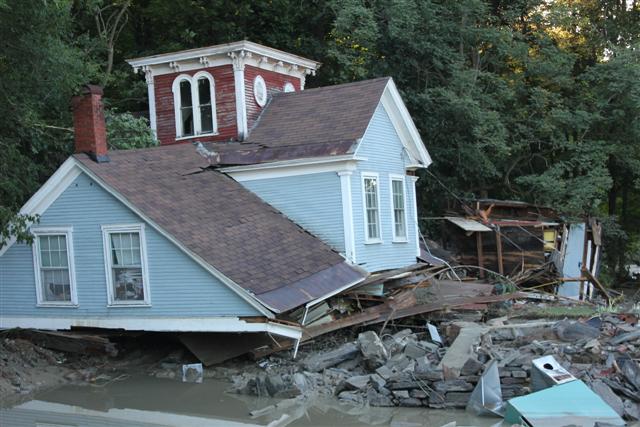Our state’s recent experience with Hurricane Irene brought the issue of crisis communication front and center for many businesses in Vermont. In this post I’ll cover the basic elements of a crisis communication plan. This won’t be a discussion on the importance of having a disaster recovery plan—hopefully you already have one of these (and if you don’t, it’s time to put that at the top of your company’s “to do” list).
Basic elements of a crisis communication plan
The basic elements of your crisis communication plan will look very similar to any communications plan. It should include: goals/objectives; audiences; key messages; and, tactics. The obvious difference is that during a crisis your communications need to happen much more quickly. Time is of the essence.
Gather info and get it out quickly
During a crisis, your main goal is to get factual information out quickly and effectively to multiple audiences.
First, you need to gather your information. In your crisis communication plan, identify a key group of people in your company that will come together (physically or virtually) when a crisis hits–this is your crisis response team. This group will likely include your CEO and other leaders within your organization and your communications person, if you have one.
Identify one person as your spokesperson (usually, the CEO or company spokesperson). The last thing you want is to have multiple people sharing different information with employees, customers, the media or over social media channels. It only creates confusion.
Develop your key messages
What happened? What information do you have? Do you know the extent of damage or loss? Are employees safe? Are employees able to work?
This is not the time for guessing. Gather your facts and determine what information needs to be shared. Develop a message triangle based upon the information you have. You’ll want a basic description of what has happened AND what you are doing about it. Demonstrate that you’re taking action and you have a plan. As the crisis unfolds, you will want to update your message triangle accordingly.
Keep in mind that you may have different messages for your different audiences. So you may need to develop a message triangle for each audience.
Communicate to all your stakeholders
Let’s start with your most important audience in this case: your employees. If a crisis hits during the workday, you can bring employees together and update them on what has happened, steps being taken and what they need to do. If a crisis hits when employees are not at work, be sure you have a way to reach all your employees. Some companies use phone trees with each person responsible for reaching someone else on the list. This will require that everyone has contact information available at home and at work. And if computers are down, it’s also good to have this information in hard copy.
Your goal here is to reach your employees as soon as you can with the necessary information. You do not want your employees to hear this information from someone else (like the media).
Other audiences you’ll want to reach include your customers, suppliers, board members, or stockholders. What information are you able to share with them? What reassurance can you give about operations and deliveries? Be honest. Keep in mind that some competitors will waste no time in trying to contact your customers if they sense you are down. Again, you want to provide reassurance and show that you’re taking action.
The media is your friend
The media is your best friend during a crisis. Reporters are hungry for stories and information when disaster hits. And if all other communication channels are down, they may be your only mechanism for getting information out.
Issue a news release, call them, or send an advisory—whatever is most efficient for you. Armed with your message triangle, deliver the information that you want to communicate. As the situation changes, keep the media updated.
You should have a media list developed (in advance) for this communication. You will want to have a local media list and a separate one for your trade outlets. Again, you and your communications person should have all media contact information accessible at work and at home.
Social media during a crisis
Social media brings a whole new element to crisis communications plans. Your social media channels are a great way to provide updates—in real-time. If you’re already connected with members of the news media via social media channels like Twitter, this can be a great way to get information out quickly and update as things change. If you’re not connected with the media, then start building these connections now.
And don’t forget about your company website. You may want to consider issuing updates in your company newsroom or on its homepage.
Obviously, the impact of the crisis will affect your communication choices. After Hurricane Irene struck, many Vermont communities were without phone or Internet service.
Hopefully you’ll never be in a position to have to implement your crisis communications plan. But remember it’s always easier to put such a plan into action when you have one, than find yourself in the midst of a crisis without one. Time to get writing your plan!
————- photo credit: Hurricane Irene Damage, U. S. Fish and Wildlife Service – Northeast Region via Flickr



Crisis Communications Planning | Change Conversations http://ow.ly/6DmbO